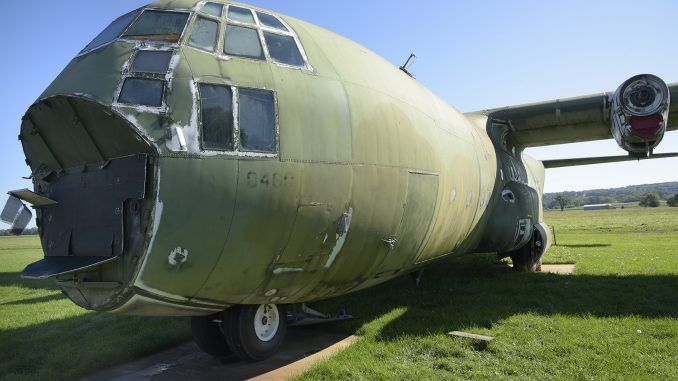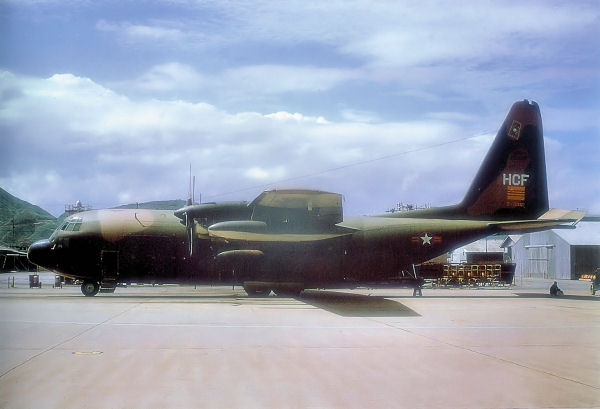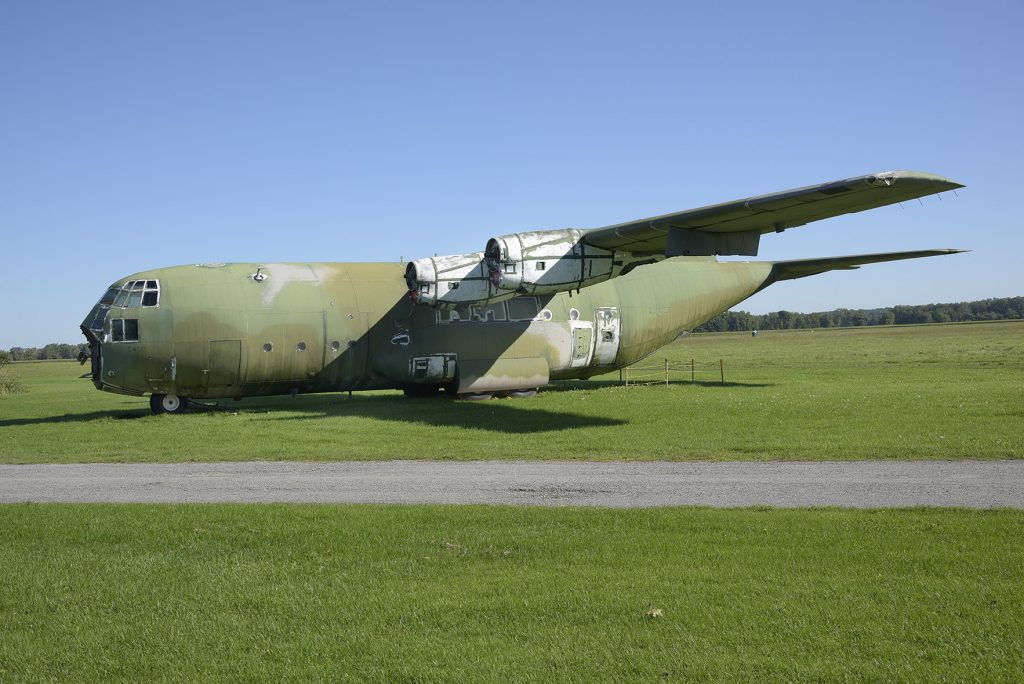
A new memorial to veterans of the Vietnam War is being planned for the National Warplane Museum in Geneseo, New York. A committee composed of veterans and veterans groups is in the preliminary stages of planning and raising funding for the project. Its centerpiece will be a restored Lockheed C-130 Hercules — which the museum has unofficially christened “Saigon Lady” due to her unique history.
Pham Quang Kheim, who served with the South Vietnam Air Force at the time, “borrowed” this particular C-130, flying out of Saigon surreptitiously in the dying days of the war during April, 1975 — C-130A 57-460 was one of the last aircraft to leave the city before it fell to the North Vietnamese. Kheim escaped to Singapore with his family and more than 50 refugees aboard the aircraft. He later became a captain for U.S. Airways.
The aircraft was, until recently, part of the Smithsonian’s collection. Her history, and that of Kheim’s hair-raising escape, is well told on the National Air & Space Museum’s website as follows…
The aircraft was accepted at Selfridge AFB, Michigan, on March 11, 1958. By August it was assigned to the 317th Troop Carrier Wing Medium stationed in France. A number of duty stations followed which included Madrid, Spain; Langley AFB, Virginia; Lockbourne AFB, Ohio; Warner Robins, Georgia; Naha, Okinawa; Richards-Gebaur, Missouri; and Selfridge, Michigan. Periodic Depot Maintenance at was carried out at Hayes Aircraft Corporation and at Consolidated Aircraft Maintenance Units (CAMs).
The aircraft served with the South Vietnamese Air Force (VNAF) from October 1972 to August 8, 1975. It was also assigned to the 16th Special Operations Squadron (SOS) Korat AFB, Thailand, some time after its escape from Vietnam to Singapore in April 1975. When returned to USAF, the aircraft had flown more than 9,500 hours.

While the aircraft’s specific records are missing for the VNAF period, assigned C-130s were known to have participated in re-supply and bombing missions in support of ARVN outposts. At some time the Museum’s aircraft was assigned to the VNAF 435th Squadron. The “Herkys,” as they were then known, were a valuable asset to the VNAF, despite their small numbers. The C-130As were the largest and heaviest load-carrying aircraft in the VNAF inventory. As the enemy advanced southward, they were used extensively in the evacuation of northern cities. By January 1975 the ground situation had deteriorated drastically. On the night of 24 March 1975, the Deputy Commander of VNAF ordered the evacuation of ground support people from Da Nang to Tan Son Nhut at Saigon. One of the evacuation aircraft that participated in that operation can be assumed to be Serial No. 57-460, now the Museum’s Hercules.
A co-pilot 1st Lt. Pham-Quang-Khiem in the 435th Squadron tells of a hair-raising incident of one such C-130 evacuation flight when he had loaded what was thought to be 200 marines, army, civilians, as well as families of VNAF. In the loading confusion, people continued to jam into the aircraft, eventually making it impossible to raise the loading ramp for take-off. The pilot solved this problem by fast taxiing and then jamming on the brakes. It was effective and on arrival he observed the cargo as a “compressed mass” of humanity. The best he could figure was that there were about 350 people on board.
That flight and the panic that Lt. Khiem saw in Da Nang caused him to consider that if this was likely to happen in Saigon, he would steal a C-130 and get his own family out. This soon became a reality and with the help of a best friend, Major Nguyen Huu Canh, in a sister squadron, the 437th, a complicated plan was developed. On 3 April 1975, with much good fortune, the plan was executed. After a wild series of events including a landing to pick up the family at Long Thanh (an abandoned air strip) they landed in Singapore at 7 p.m. with his entire family, except his brother who was in the Army, stationed at Vung Tau. This stolen airplane was the Museum’s C-130 Serial No. 57-460 then assigned to the 435th, Lt. Khiem’s squadron.
By February 1976, after 57-460 rejoined the USAF, this veteran C-130 was assigned to the 924th Tactical Airlift Group at Ellington AFB, Texas, and then to the ANG 927th Tactical Airlift Group at Selfridge. During the next thirteen years until its transfer to the National Air and Space Museum, the aircraft resumed its duties with Tactical Airlift Groups/Wings and Squadrons (primarily the 927th Tactical Airlift Group, with occasional maintenance and repair at Hayes International Corporation and the Aero Corp, Lake City, Florida). By 1987, C-130 Serial No. 57-460 was assigned to the 95th Tactical Airlift Squadron, AFRES, Mitchell Field, Wisconsin. When finally delivered by the 95th Tactical Airlift Squadron to the Museum on January 30, 1989, it had flown 14,272 hours.”

The National Warplane Museum acquired the C-130 as a gift from the Smithsonian’s National Air and Space Museum earlier this year. World Wide Aircraft Recovery, disassembled the Hercules and transported it by road from its storage site at Dulles International Airport in Chantilly, Virginia to the National Warplane Museum, where it is in the process of being re-assembled and restored. The committee’s goal is to raise funding from sponsorships, grants and donations to construct the memorial, which they hope to have completed by next spring. Anyone wishing to help with this important project should contact the National Warplane Museum.


1 Trackback / Pingback
Graphic Design, Branding and Aviation Art